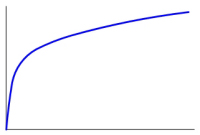
dB is an abbreviation for "decibel". One decibel is one tenth of a Bel. But the use of Bel is not usual.
The measurement quoted in dB describes the ratio between the quantity of two levels, the level being measured and a reference. The absolute quantity of the signal is not relevant.
General rule: ONE dB is always ONE dB, independent whether power or voltage is described.
The use of dB without further suffix is the representation of a voltage ratio according to
the formula: p (in dB) = 20log U1/U2. U1 is the voltage level under test and U2 is the reference value.
| dB | Power Ratio | Voltage or Current Ratio | dB | Power Ratio | Voltage or Current Ratio |
| 0 0.5 1.0 1.5 2.0 3.0 4.0 5.0 6.0 7.0 8.0 9.0 |
1.00 1.12 1.26 1.41 1.58 2.00 2.51 3.16 3.98 5.01 6.31 7.94 |
1.00 1.06 1.12 1.19 1.26 1.41 1.58 1.78 2.00 2.24 2.51 2.82 |
10 15 20 25 30 40 50 60 70 80 90 100 |
10,0 31,6 100 316 1.000 10.000 100.000 1.000.000 10.000.000 100.000.000 1.000.000.000 10.000.000.000 |
3,16 5,62 10 17,78 31,6 100 316 1.000 3.162 10.000 31.620 10.0000 |
 |
|
| formula for dB (p: power / u: voltage) | logarithmic curve (base 10): "lg" |
| 0dB | play | |
| +3dB | (double power) | play |
| +6dB | (four times power) | play |
| +10dB | (ten times power) | play |
To describe an absolute value, the reference point must be known. There are different reference points defined. dBV represents the level compared to 1 Volt RMS. 0dBV = 1V. There is no reference to impedance (V = Volt). dBu represents the level compared to 0,775 Volt RMS with an unloaded, open circuit, source (u = 'unloaded' or 'unterminated' -- a voltage that is not related to power by an impedance). dBm represents the power level compared to 1 mWatt. This is a level compared to 0,775 Volt RMS across a 600 Ohm load impedance (m = milliWatt).
Usual professional reference level: +4dBu or +6dBu (+4dBu equals 1.23 Volt RMS), consumer equipment reference level: -10dBV.
Conversion from dBV to dBu:
0dBV = +2.2dBu. The consumer "0dB" reference level of -10dBV is the equivalent to a level of -7.8dBu.
+4dBu and -10dBV systems have a level difference of 11.8dB (not 14dB). This is almost a voltage ratio of 4:1 !!!
| +4dBu | reference: 0dBu = -18dBFS | play | |
| -10dBV | reference: 0dBV = -15.8dBFS | play |
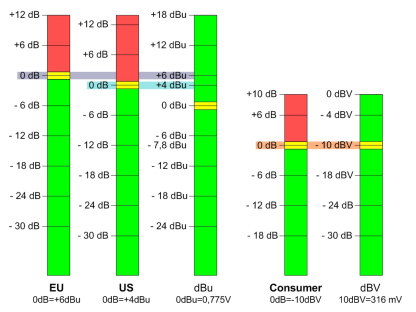 |
| level and scale comparison |
0 dBFS represents the highest possible level in digital gear. All other measurements expressed in terms of dBFS will always be less than 0 dB (negative numbers). 0 dBFS indicates the digital number with all digits ="1", the highest possible sample. The lowest possible sample is (for instance for 16-bit audio):
0000 0000 0000 0001. This equals -96dB. Therefor the dynamic range is 96 dB. For 20-bit digital audio the dynamic range is 120dB and for 24-bit digital audio it is 144dB.
The analog full-scale input level is the input voltage level that will cause the A/D converter to just equal full scale with no clipping on either positive or negative peaks.
The test is done with a sine wave to the input, monitoring the output of the A/D converter. The analog input is measured as root-mean-square (RMS). Output full scale is defined as the analog output voltage produced while playing a 997 Hz digital full-scale sine wave, assuming the THD+N is less than -40 dB relative to the signal level.
Today more or less all devices are working in the digital domain, but interconnection is often still done in the analog domain. Connecting digital devices via analog interconnection requires knowledge of the equivalent analog level to digital fullscale for each device. It is also important to keep the bit depth on the A/D, D/A and internal processing in consideration.
Measuring audio levels with RMS meters or any other standardized average level meter that indicated loudness or average level over a certain time constant do not show peaks that could be already over digital fullscale! Knowledge of the approximate crest factor of the signal, eventually necessary compression and peak metering is very important to keep signals clean. With todays 20-bit and 24-bit systems it is not necessary anymore to push signals up as far as possible.
![]() See: Sample Rates and Bit Depth for Digital Audio.
See: Sample Rates and Bit Depth for Digital Audio.
0dBFS equals a certain analog level that must be specified by standards or individual devices by the manufacturer.
| European Broadcast | standard EBU R68 | -18dBFS = | 0dBu |
| German ARD+ZDF | -15dBFS = | 0dBu | |
| American Broadcast | -20dBFS = | +4dBu |
For broadcast applications in Europe the typical analog studio level is + 6dBu (1.55 V). This level is considered " 0dB ".
For digital alignment levels the EBU Rec. R68 was introduced in 1992. It recommends a difference between full-scale clipping level and alignment level of 18 dB, there as the alignment level should be -18 dBFS.
For (EBU) transmission lines the PML (Permitted Maximum Level = 100% Modulation) is +9 dBu equal to -9 dBFS (ITU-R Recommendation BS.645-2, EBU Recommendation R68-2000). 'Alignment Level' and 'Permitted Maximum Level' are defined in ITU-R Recommendation BS.645.
In the US the standard SMPTE RP155 defines the alignment level for broadcast applications as -20db dBFS, equal a signal voltage of 1.23V rms (+4dBu).
SMPTE established the Standard Operating Level (SOL) for movie and television work with -20 dBFS = +4dBu. Maximum output is 0 dBFS = +24 dBu.
Canadian Broadcast: " .. In digital audio, the highest possible input level with peaks is 0 dBFS (full bits) and the reference level is –20 dBFS. This means the available headroom is 20 dB. However, if a peak causes the digital meter to reach 0dBFS, the corresponding electric signal will equal the
reference level plus the headroom, that is, + 4dBu + 20dB = +24 dBu. .."
Considering program levels and perceived loudness, music should be levelled always -4dB to -8dB lower than speech.
| Alignment Level -9dB = 35% |
Permitted Maximum Level (Nominal Level) 0dB = 100% |
|
| ITU-R BS.645-2 Transmission Level (international) |
0 dBu | +9 dBu |
| German Broadcast Studio Level (ARD) |
-3 dBu | +6 dBu |
| US Reference Level |
+4 dBu | |
| EBU digital Transmission and Studio Level (international) |
-18 dBFS | -9 dBFS |
In the movie industry a so-called 'Dolby Level' is often used. This corresponds to the VU level '0VU' equivalent to 0dBu (sine wave).
“Dolby Level” us used in the film industry.
In music the ratio between RMS level and peak level can be as small as 3dB but also as large as 20dB. (See Crest Factor). To reproduce these signals undistorted and without 'hidden' clipping of peaks and short transient signal parts the entire signal chain must be capable to process this ratio. For a ratio of 20dB (there the peaks are 20dB louder than the RMS average signal) this would require 20 more dB headroom above the 0dB RMS mark. Studio recordings normally use a headroom of 20dB to securely avoid distortion.
Footroom is the needed level between noise and the lowest audible signal (music, speech). The range between footroom and headroom is the usable area for recorded signals. The footroom is needed to keep noise inaudible, headroom is needed to avoid clipping of peaks in the music signal. With todays technology 20dB headroom, 60dB usable dynamic and 20dB footroom can easily be achieved.
The wider dynamic range offered by 24-bit recordings compared to 16-bit and 20-bit recordings extend the complete dynamic range of the audio signal. The extension works downwards into the noise floor as higher total dynamic range and larger footroom. The 'total level' of a 24-bit recording is not 'louder' than a 16-bit recording.
| Media | Signal/Noise Ratio | Headroom | Usable Dynamics | Footroom |
| Low-quality Analog Tape | 48 dB | 8 dB | 30 dB | 10 dB |
| High-quality Analog Tape | 88 dB | 16 dB | 60 dB | 12 dB |
| AM Radio | 40 dB | 6 dB | 24 dB | 10 dB |
| FM Radio | 68 dB | 16 dB | 42 dB | 12 dB |
| Vinyl Disk | 65 dB | 16 dB | 39 dB | 12 dB |
| CD | 95 dB | 20 dB | 65 dB | 10 dB |
| CD (high bit recordings with advanced transfer) | 113 dB | 20 dB | 83 dB | 10 dB |
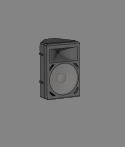 |
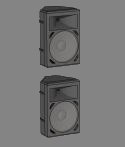 |
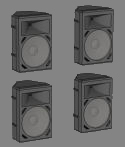 |
| 0dB | 3dB | 6dB |